How to Run System Restore as Administrator on Windows 11? 5 Effective Ways!
Get Full Access to System Restore Points with Elevated Privileges on Windows 11
System Restore a Microsoft Windows tool that restores a computer to a previous state of your computer with your files and folders. If your system gets corrupted and then running system restore will allows you to revert your system to a previous state, effectively fixing issues caused by software changes, driver installations, or system updates. However if you want to perform certain actions with System Restore, such as restoring or creating a restore point, administrative privileges are often required. You can run System Restore as administrator ensures you have full access to its functionalities and prevents any interruptions caused by permission restrictions. So this tutorial explains how to open and run system restore point as administrator on your windows 11 pc.
See Also: Run Firefox As Administrator On Windows 11? 5+ Best Ways!
5+ Ways to Open & Run System Restore as Administrator on Windows 11
From the Start menu, to creating a dedicated Desktop Shortcut, in this section we will discuss all the effective ways to run this app as administrator on Windows 11.
- Quick Way to open the System Restore as Administrator using the Start Menu.
- Use the Run Command and open System Restore as Admin on Windows 11.
- Run a New Task to Create System Restore with Administrative Privileges using the Task Manager.
- Always Run System Restore as Administrator by creating a Dedicated Desktop Shortcut.
- Access System Restore with Elevated Privileges using the File Explorer.
- Open Command Prompt or Windows PowerShell as Administrator and Run System Restore.
IMPORTANT: Running applications as an administrator grants elevated privileges that can significantly affect your system. Please use caution when doing so, as it can lead to Unintended System Modifications, Security Vulnerabilities, Accidental Data Loss, Unauthorized Access, Irreversible Changes, etc.
How to Run System Restore as Administrator on Windows 11 using the Start menu?
This is the simplest method to open and run this application as administrator. Here are the steps.
- Go to the Start menu. You can also use the shortcut WinKey + S to access the Start menu search bar.
- In the Search bar, type rstrui. Once you find the application, right-click on that and click Run as Administrator.
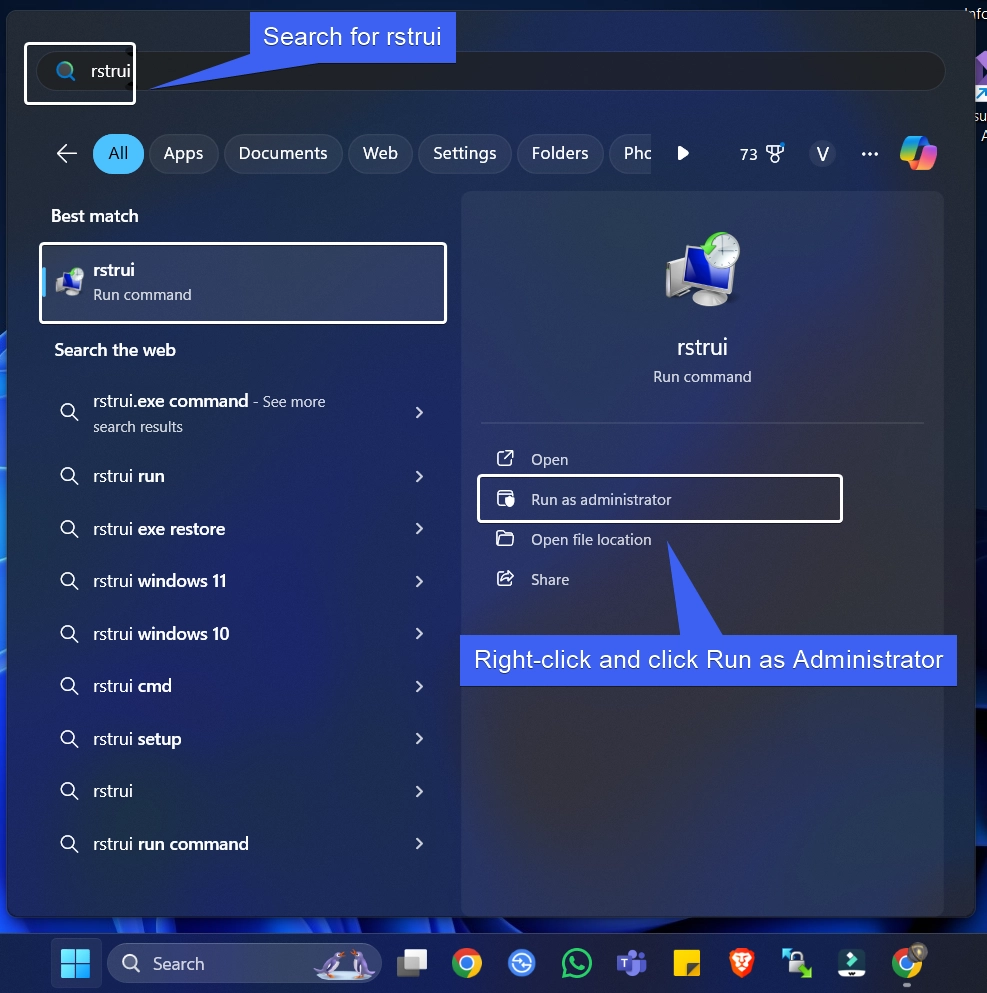
- The User Account Control will prompt for your confirmation and open System Restore with Administrative Privileges on Windows 11.
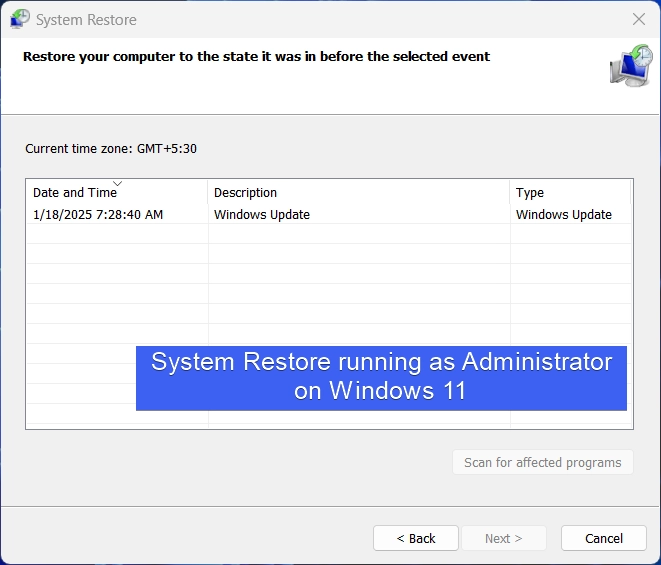
Use the Run Command and open System Restore with Administrative Privileges on Windows 11
- Go to the Run Command. The easy way to access the Run Command is to use the Keyboard Shortcut, WinKey + R.
- Type the command
rstruiand press CTRL + SHIFT + ENTER. This will prompt the system to execute the command with Administrative Privileges.
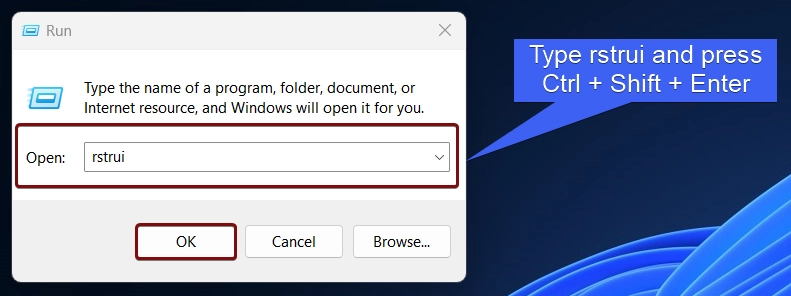
- The system will confirm and open System Restore with Administrative Privileges.
Create a New Task to Run System Restore with Elevated Privileges on Windows 11
- Right-click on the Taskbar and click Task Manager. You can also use the shortcut CTRL + SHIFT + ESC. This combination will open Task Manager directly.
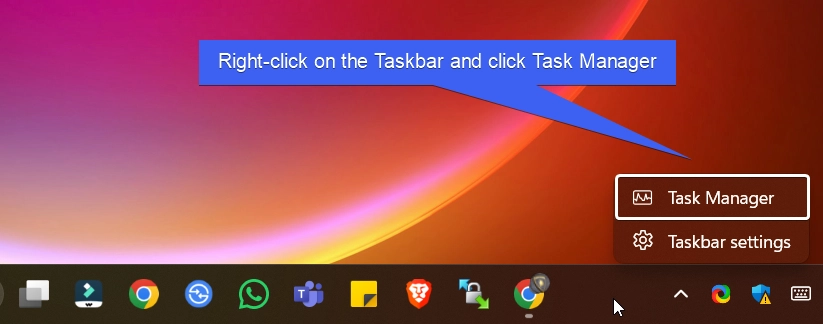
- In the Task Manager, under Processes, click on Run New Task. Create New Task dialog will pop up now.
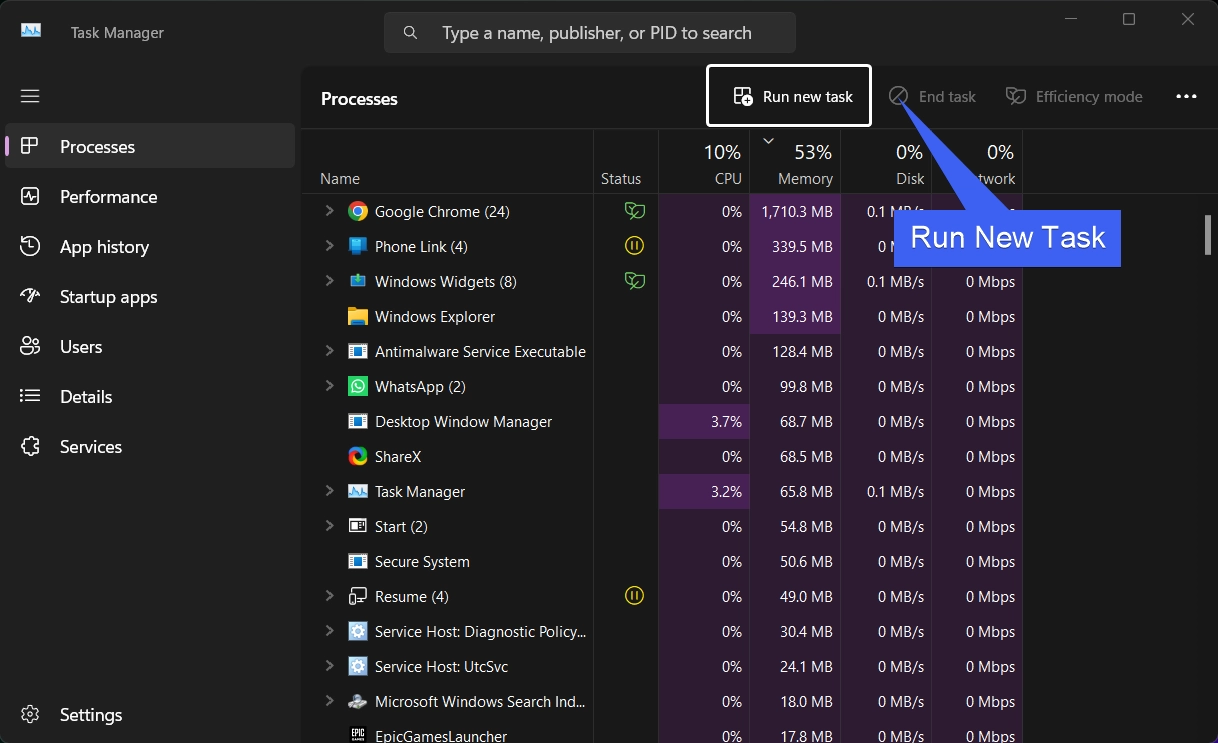
- Type the command
rstruiand enable the checkbox “Create this Task with Administrative Privileges“. Finally, click OK.
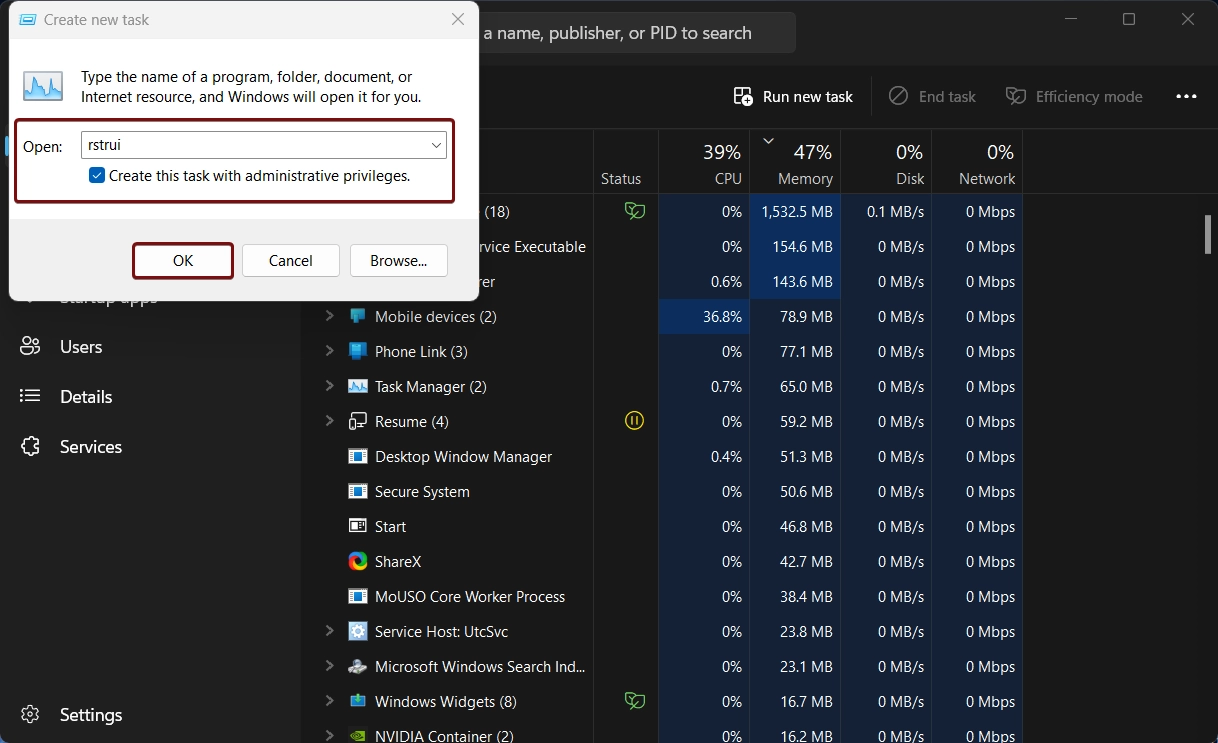
Create a Dedicated Desktop Shortcut and Always open System Restore with Elevated Permissions on Windows 11
- Right-click on the Empty space of the Desktop, and click New > Shortcut.
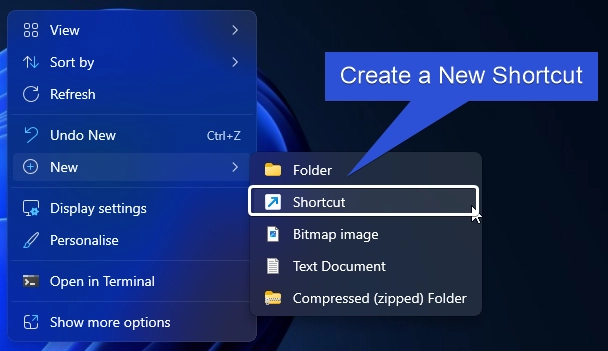
- The Create Shortcut dialog box will open now. In “Type the Location of the Item“, enter the command
C:\WINDOWS\system32\rstrui.exeand click Next.
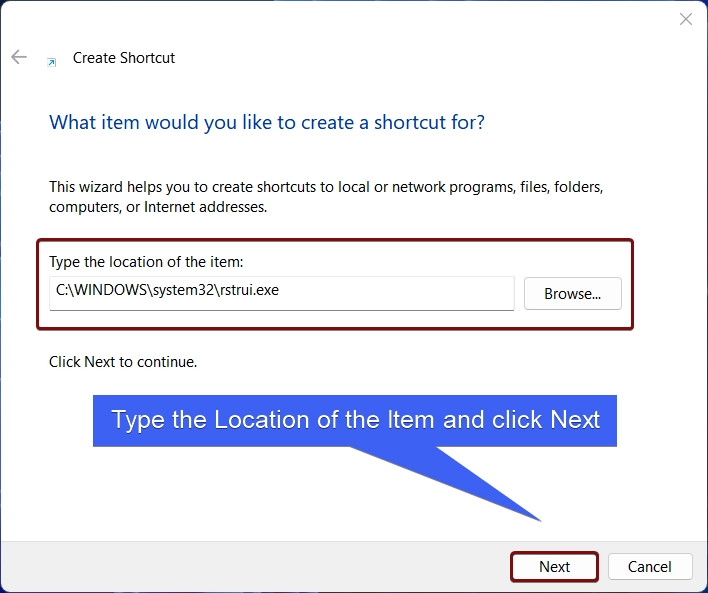
- The system will assign the shortcut name
rstrui. Kindly change it to System Restore. Finally, click Finish.
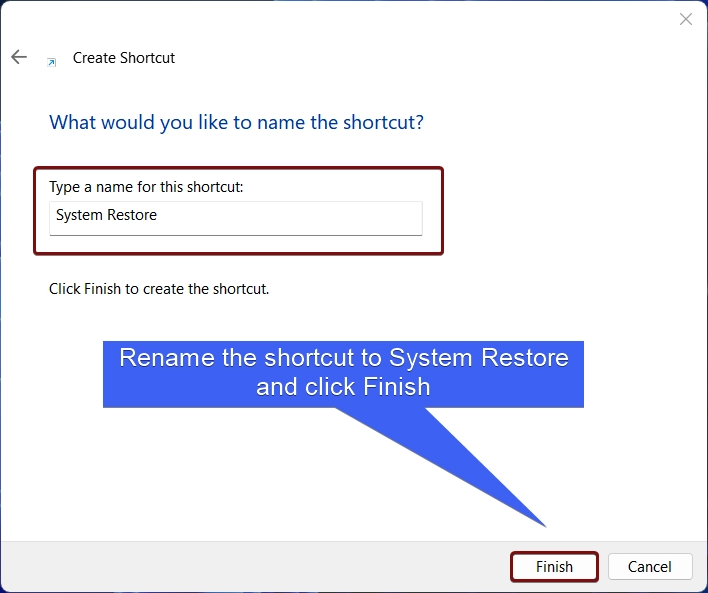
- System Restore Desktop Shortcut will be created.

- Right-click on the Shortcut and click on Properties.
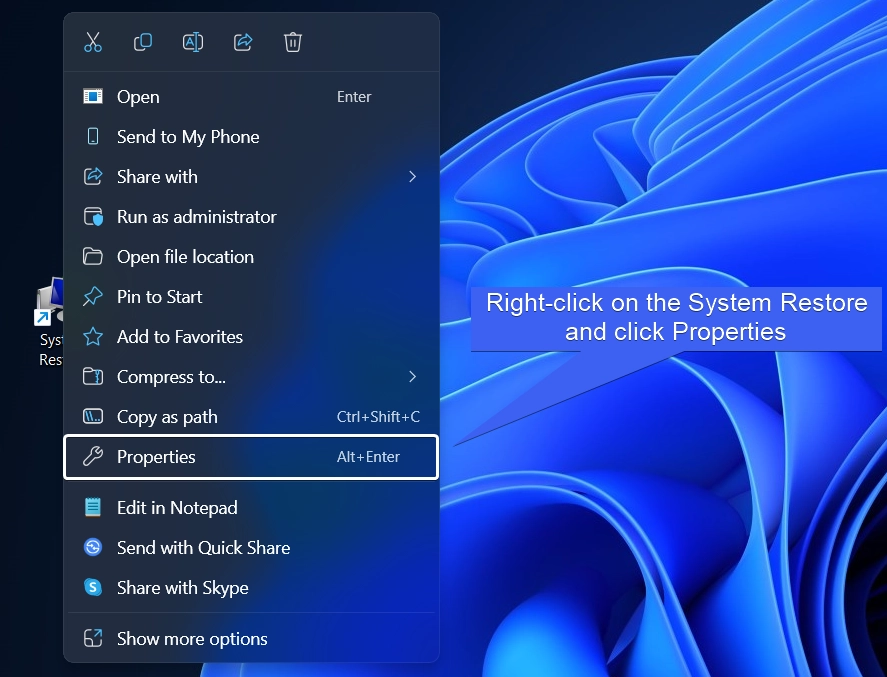
- System Restore Properties will open now. Click Advanced.
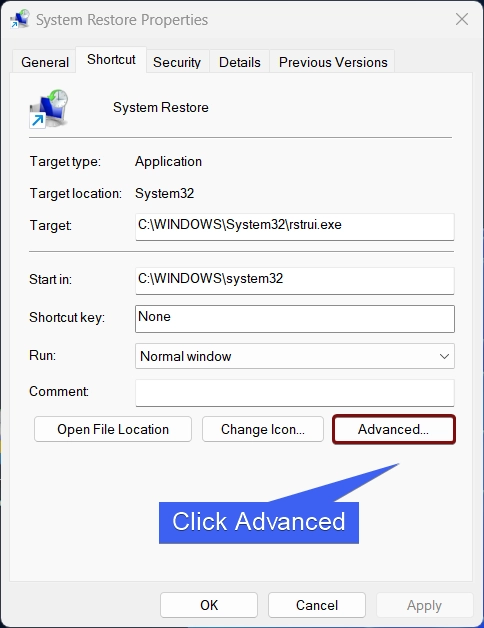
- In Advanced Properties, make sure to enable the checkbox “Run as Administrator“. Finally, click OK, and then Apply.
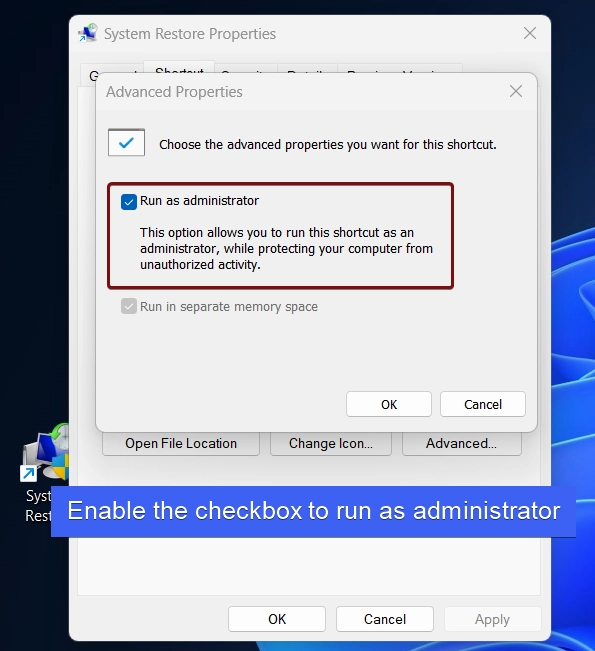
- This option allows you to run this shortcut as an administrator, while protecting your computer from unathorized activity.
- Everytime you open System Store via this shortcut, the User Account Control will prompt for your confirmation and open it with Elevated Privileges.
Use File Explorer and Launch System Restore with Elevated Permissions on Windows 11
- Open File Explorer using the Shortcut WinKey + E.
- In the File Explorer, enter the following path to access the System 32 Folder.
C:\WINDOWS\system32

- Once in the System32 Folder, go to the search bar and search for rstrui.

- Locate rstrui, and right-click on the file and click “Run as Administrator“.
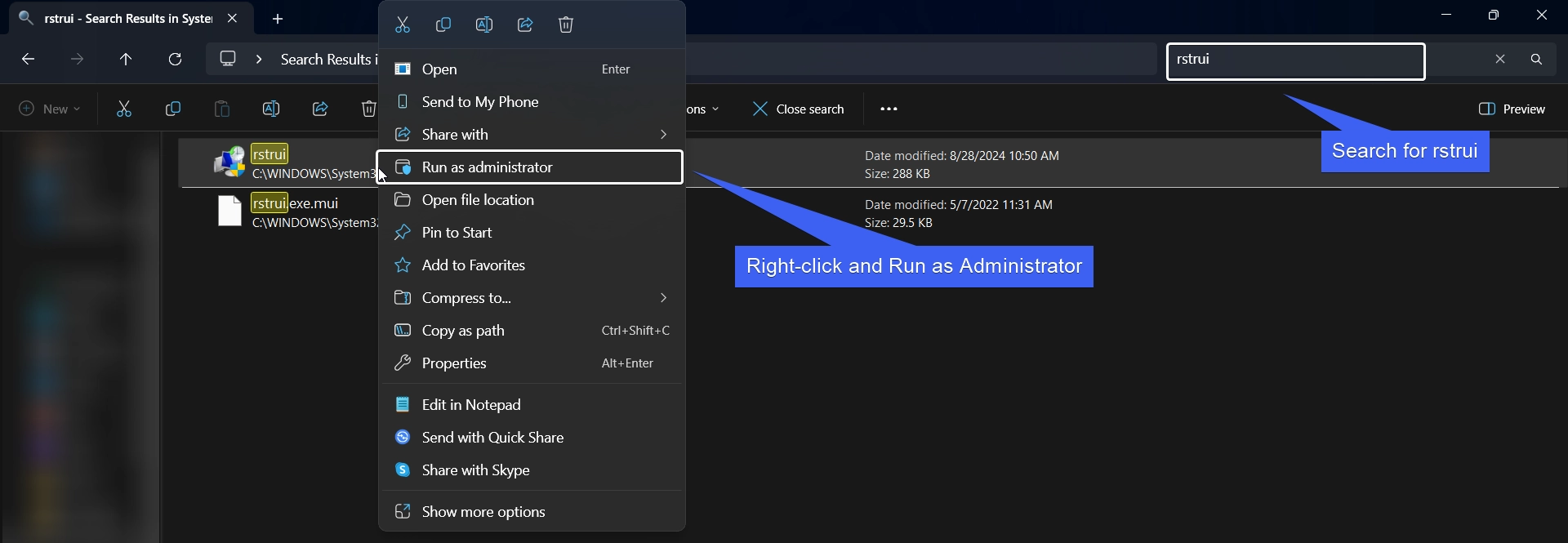
Open Windows PowerShell or Command Prompt as Administrator and Run System Restore on Windows 11
- Open Run Command using the shortcut WinKey + R.
- Type
powershell(For Command Prompt, use the commandcmd), and press CTRL + SHIFT + ENTER.
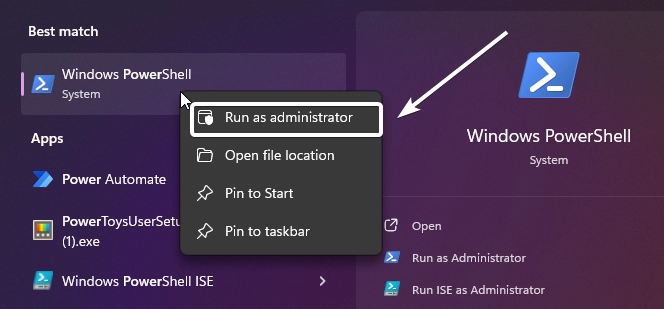
- This will prompt the system to execute this command with Administrative Privileges. In the PowerShell, execute the following command.
rstrui

Be Cautious While Running an App as Administrator on Windows 11
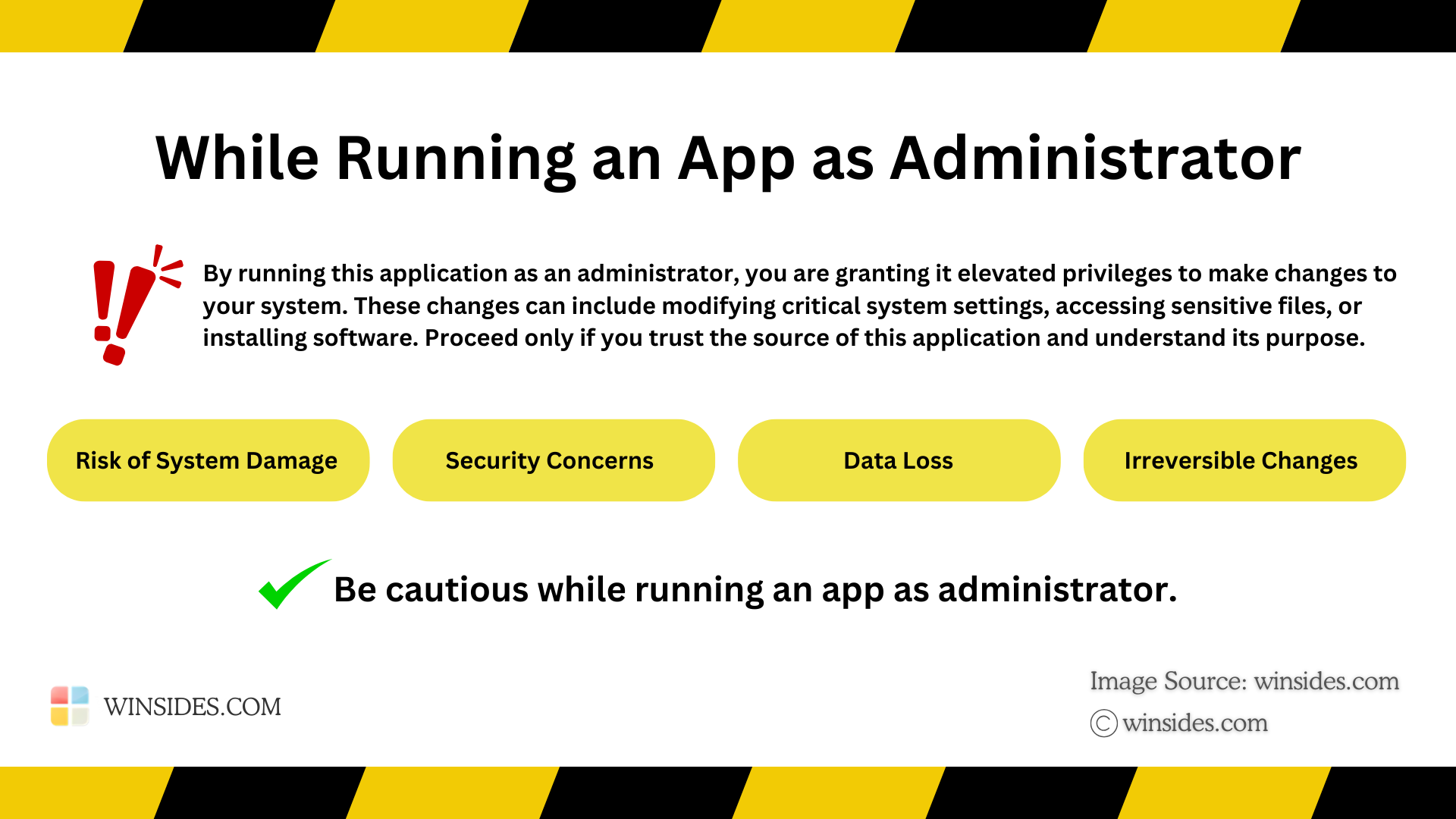
While running System Restore as Administrator on Windows 11 grants it elevated privileges, which can potentially bypass system security restrictions. Please proceed with care and only run trusted applications in this mode. At Winsides.com, we advise our users to use Administrator privileges only when absolutely necessary to perform tasks requiring elevated rights. Misuse of administrative privileges may lead to System Vulnerabilities, Data Loss, System Instability, Security Concerns, Irreversible Changes, etc.
Read This: Run Google Chrome As Administrator On Windows 11! {6+} Best Ways
Verdict:
I hope this tutorial will help you to open system restore point as administrator on your pc. If you have any queries to the above topic then comment us below and we will reply with the best solution. Find more interesting tutorials on our Homepage: Winsides.com
Related Articles:
- How to Check PC Specs without Logging into Windows 11?
- Microsoft’s Majorana 1 Chip – The Future of Quantum Computing?
- How to Change Font Size on Windows 11?
We combine expert insights with user-friendly guidance. We thoroughly research and test everything to give you reliable and simple to understand tech guides. Please take a look at our publishing process to understand why you can trust Winsides.



